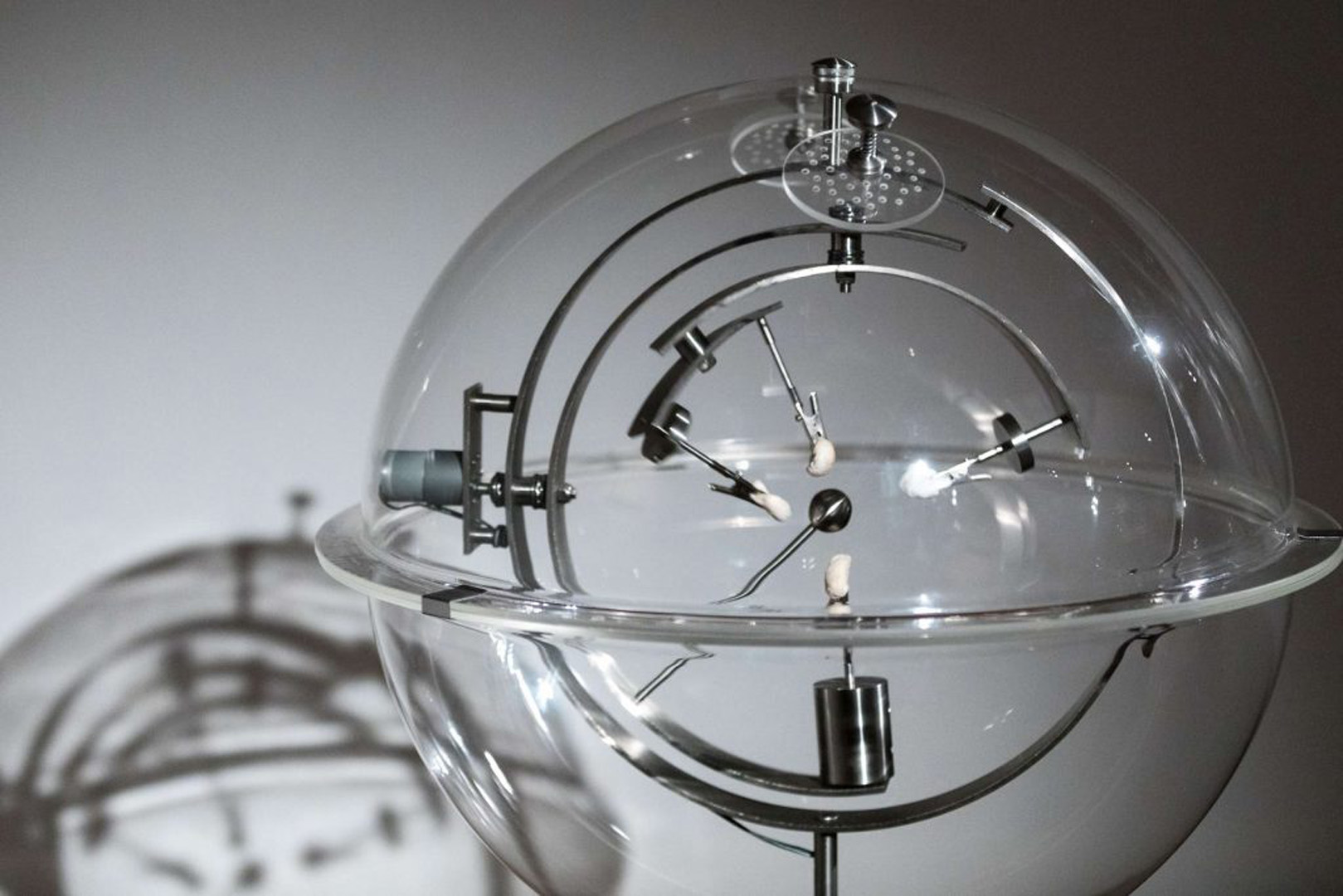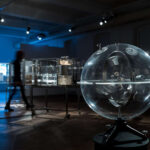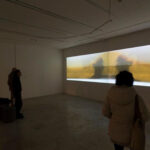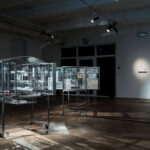“Lygophilia” by Robertina Šebjanič
Title:
- Lygophilia
Artist(s) and People Involved:
Exhibiting Artist(s):
Symposium:
- ISEA2023: 28th International Symposium on Electronic Art
-
More artworks from ISEA2023:


Artist Statement:
- Neotenous dark dwellers_Lygophilia, installation, 2018
- Piscis ludicrous / Transfixed Gaze_Lygophilia, video essay, 2017
- Dark Drops_ Lygophilia, sound composition, 2017
- Odorantur_Lygophilia, installation, 2019
- online publication – video capsule Neotenous Dark Dwellers – Lygophilia, Robertina Sebjanic edited by Annick Bureaud on MemoRekall. http://archive.olats.org/ope/ope.php (best to use in Firefox and Safari in Chrome it is not working)
Hacnum Exhibition. Nelson Mandela Garden in Paris, May 16 – 21
Lygophilia is a series of research-based artworks initiated in 2017 by Robertina Šebjanič in Mexico and pursued in Slovenia to explore the love (Gr.: philéō) of darkness (Gr.: lúgē) and the unknown dwellers in places inhospitable for humans.
The opus of works Lygophilia:
1. Neotenous dark dwellers – Lygophilia / installation / by Robertina Šebjanič, production Projekt Atol Institute, 2018
Lygophilia weaves together mythologies and sciences, history and future, fears and desires, continents, cultures, humans and non-humans. Lygophilia folds and unfolds the stories carried by those fascinating creatures that are the Mexican Axolotl and the Slovene Proteus.
From immortality to regenerative medicine — both animals are, as adults, in a state of “eternal youth” (neoteny) showing extraordinary longevity and regenerative abilities that put them at the centre of ancient myths as well as current cutting-edge scientific researches.
Credits: Artist: Robertina Šebjanič // Curating and advising: Annick Bureaud // Scientific advisory: Tular Cave Laboratory // Glassblowing: Pero Kolobarić and Jireh Glass // Metal construction: Roman B.
Production: Projekt Atol (Uroš Veber), Slovenia, 2018 & Arte+Ciencia (UNAM), Mexico 2017; Sektor Institute, Slovenia 2017 / 2018
Production support: Ministry of Culture of Slovenia and the Municipality of Ljubljana
Special thanks to: Aisen Caro Chacin, Miha Godec, Rampa Lab, Osmo/za Consortium, Bunker team
photos by Miha Godec
More: http://robertina.net/neotenous-dark-dwellers-lygophilia
2. Odorantur_Lygophilia, installation, 2019
– in which the artist takes the viewer into the Proteus’ environment by triggering various sensory perceptions. Life and evolution in the darkness raises the question as to how proteus can perceive space and how it orientates in it. As an animal species whose eyes have become degenerate for no use of sight, it heightened other senses, including smell. Water pollution
therefore causes not only the accumulation of toxic substances in its body, but it also robs it from another way of perceiving the environment, hinders its communication with other species, and prevents it from detecting its prey.
Artist, research, development: Robertina Šebjanič
Technical support and development: ScenArt d.o.o.
Development of the smell / odour: Marko Žavbi
Production: Projekt Atol (Uroš Veber) and Museum and Galleries of Ljubljana
Year of production: 2019
Special thanks: Tular Cave Laboratory, BioTehna
Production support: Ministry of Culture of Slovenia and the Municipality of Ljubljana
3. Piscis ludicrous / Transfixed gaze (Lygophilia), video essay, 15′ 30”, 2018
intervenes into environments and discusses ecology in order to establish substantial changes in an ecosystem. It explores how to perceive the parameters of the ecological needs of other species in the times of dark ecology. It questions the relationship between mythology and scientific facts merged with popular culture, and invites us to gain a more profound view of interspecies cohabitation and coexistence with a focus on relationship between axolotls and humans.
The axolotl is a neotenic salamander native to North America found in the highland lakes of Mexico. The narratives of the axolotl’s complex history, present and future are viewed through different lenses:
-Axolotl as a species that is facing extinction in its natural environment;
-Axolotl as a subject of scientific research considering its extraordinary regenerative abilities and the promise of everlasting life;
A-xolotl as a cultural heritage representing biopolitical and decolonial relations, displaying the connection between mythology in the contemporary world.
More: http://robertina.net/piscis-ludicrous-tranfix-gaze-lygophilia
4. Dark drops, sound composition 2017, vinyl 2018/2019 (SubAqua – Sektor Institute)
To be a thing at all – a rock, a lizard, a human – is to be in a twist.How thought longs to twist and turn like the serpent poetry! _Timothy Morton (Dark Ecology)
Drops that resonate in the darkness of the caves, are condensed representation of a complex and extreme environment that is still full of mystery, darkness and a special beauty, where the geological and biological time are seems to happen in different time span.
In the caves the sound of the water dropping has a strong presence, as is the sound that is breaking the silence to the proteus / olm*. This little drops are the “information transfer”, getting the info about the living conditions from above that are coming deep into the cave and they are the source of food for biological life as the building material for the geological structures.
*The proteus or olm also known as the proteus or the cave salamander – Proteus anguinus) is a blind amphibian exclusively found in the underwater caveskast area in Slovenia and also in some parts of of southern European (Italy, southwestern Croatia, and Bosnia and Herzegovina)
Sound composition: https://robertina.bandcamp.com/track/dark-drops-lygophilia
More: http://robertina.net/dark-drops
5. Lygophilia / Transfixed gaze (August – September 2017)
Mexico city, art – research residency at Arte+Ciencia at UNAM and development for a festival Transitio_MX: The project Lygophilia / Transfixed gaze showcases the Axolotl through different narratives:
– as a species that is facing extinction in natural environment;
– as a subject of scientific research considering its fascinating regenerative abilities;
– as a cultural imperative that helps to understand bridge between the past and future.
The Lygophilia / Transfixed gaze encourages viewers to reflect on new (ecological) realities in the time of the Anthropocene. It intervenes into environments and discusses ecology in order to establish the extent of substantial changes in ecosystem. It explores if and how we are able to perceive the parameters of ecological needs of other species in the times of dark ecology.
The mythology and scientific facts, merged with popular culture, invite audience to gain a more profound view of (inter)species’ cohabitation. Since the end of the 19 th century the number of Axolotls has increased, however, in laboratories, where they are examined for their biological advantages of their perpetual youth. On the other hand humans are the cause for (imminent) extinction of Axolotls in their natural habitat. The lakes surrounding Mexico City, where Axolotls originally live(d) in the darkness of the swamps, are losing the symbol which connects the future with the past.
The project thus opens the questions: Who observes whom? Who is seen as a monster and who is perceived as an optical illusion?
Credits (not final credits yet as project is still in research / development phase)
Author: Robertina Šebjanič
Assistant: Roberto Rojas Madrid
Curator of Transitio_MX: Pedro Soler
Production support:
Projekt Atol, Ministry of culture of Republic of Slovenia,Transitio_MX, Sektor, Centro de Investigaciones Biológicas y Acuícolas de Cuemanco Universidad Autonoma Metropolitana Unidad Xochimilco (CIBAC-UAMX), Arte+Ciencia at UNAM
art/research residency at Arte+Ciencia at UNAM lead by María Antonia González Valerio with assistance of Roberto Rojas Madrid.
Consultancy / Special thanks:
Tzintia Mendoza, Dr. José Antonio Ocampo Cervantes & Arturo Vergara Iglesias & Alan Roy Jimenez Gutierrez & Angelina Saldaña from CIBAC-UAMX (Centro de Investigaciones Biológicas y Acuícolas de Cuemanco Universidad Autonoma Metropolitana Unidad Xochimilco), dr. Jesús Chimal Monroy and Brianda Berenice Lopez Avina at Instituto de Investigaciones Biomédicas UNAM, Arte+Ciencia UNAM University, María Antonia González Valerio, Roberto Rojas Madrid, dr.Luis Zambrano from El Laboratorio de Restauración Ecológica UNAM, Francisco Martinez Perez, Secretario Auxiliar de la Cantera Oriente (REPSA),Miha Colner (Sektor), Sarah Hermanutz, Annick Bureaud, Ale de la Puente, Ida Hiršenfelder, Kristijan Tkalec (Rampa Lab), Gregor Aljančič (Tular Cave Laboratory), El Laboratorio de Restauración Ecológica UNAM,Transitio_MX festival at Centro Multimedia celebrado en Centro Nacional de las Artes (CENART)……
+ more organizations and individuals involved in the conservation of Axolotl at its natural environment (full credits of all the collaborators will be updated – as the project is still in development and it will premiered at the Transitio_MX festival, Mexico City)
UPDATE: 2017, 21 September: In light of all the tragic events that happened in last days in Mexico and as gesture of the solidarity are all public events canceled. Due to the earthquake and the declaration of emergency in Mexico, the Transitio_MX festival is canceled. – premiere 26. September, 8 pm, at Transitio_MX festival at Centro Multimedia celebrado en Centro Nacional de las Artes (CENART) in Mexico City, curated by Pedro Soler,
art/research residency at Arte+Ciencia at UNAM, lead by María Antonia González Valerio with assistance of Roberto Rojas Madrid










